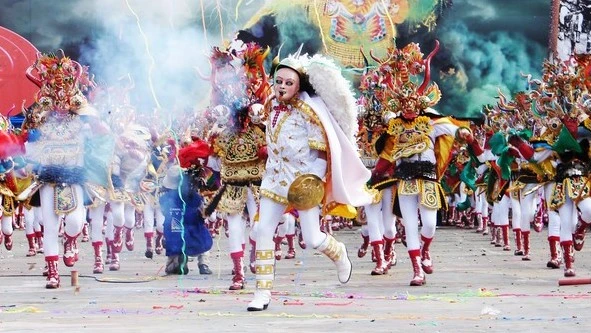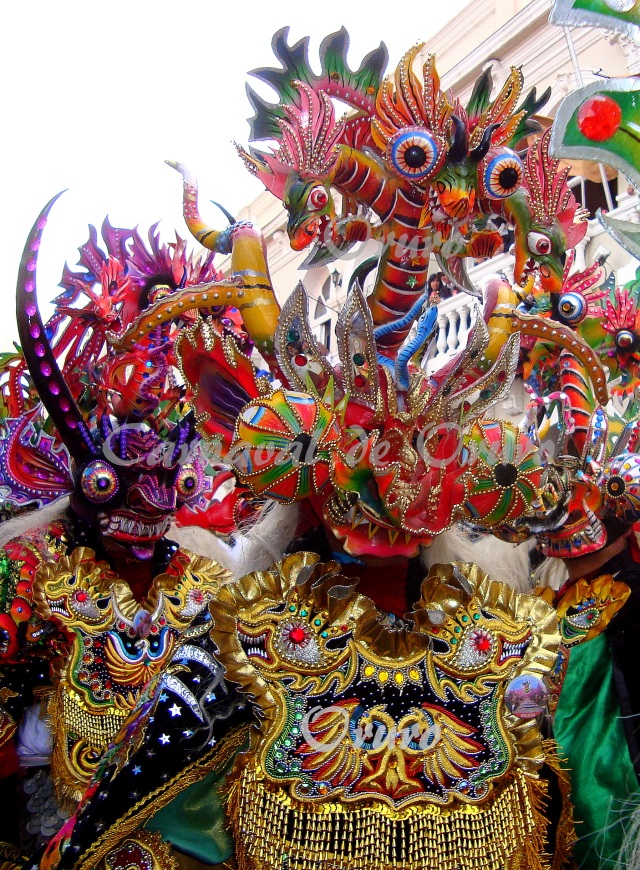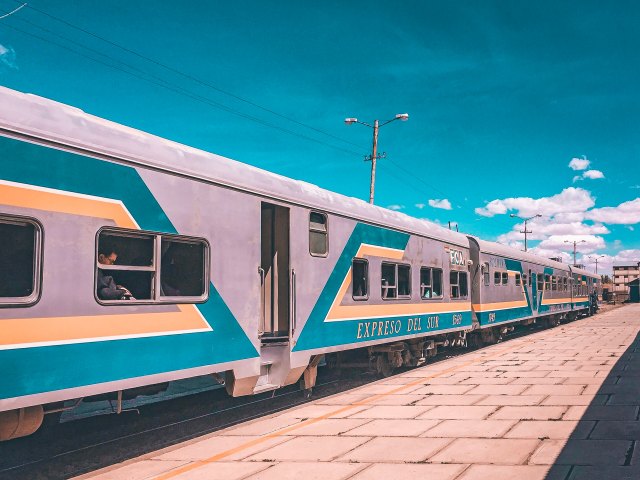
Every year around February-early March comes Carnival. A festive Christian tradition which takes place the days leading to Lent. Carnival is celebrated around the world with parades and public celebrations. Rio de Janeiro is one of the most famous parties around the world but Carnival is celebrated in most Christian and Orthodox countries with each its own traditions. Here in Bolivia, Carnival comes with its own set of customs and is well worth the visit.
The best place to enjoy Bolivia’s carnival season is in Oruro. Located in western Bolivia, 230 km south of La Paz, this small mining town is fairly quiet the rest of the year but turns into one of the largest and most visited places in South America. This year, Carnival of Oruro will take place between Saturday 2 March and Tuesday 5 March. The Oruro Carnival takes place over four days from Saturday to Tuesday, with the main celebrations taking place Saturday and Sunday. On Saturday is the Great Pilgrimage to the Socavón and the Entry of the Corso is on Sunday.

The main dance performed, originally from Oruro, is the Diablada – the dance of the devil – which is performed alongside other traditional Bolivian dances including morenadas, caporales and tinkus. The parade runs from morning until late at night, until Shrove Tuesday. Over 50 parade groups dance, sing, and play music over a four kilometer-long course. The Carnival parade passes through the Plaza 10 de Febrero square. At the different sectors there are stands where you can get a seat after paying a fee.
The 2019 Carnival procession in Oruro will start on Bolívar Street, maintaining the route of the previous years: Calle Pagador, Aroma until 6 de Agosto, Calle Bolívar, and then will continue to La Plata, Adolfo Mier and Presidente Montes, Bolívar to La Petot, Adolfo Mier, Avenida Civica “Sanjinés Vincentti”, Junín and finally culminating at the Socavón Sanctuary. The procession finishes inside the Socavon cathedral in the center of town.

Oruro’s carnival was declared in 2001 “Masterpieces of Oral Heritage and Intangible Heritage of Humanity” by UNESCO and attracts more than 400,000 people each year, involving 30,000 dancers and 10,000 musicians. The city of Oruro receives almost twice the number of inhabitants come for Carnival. For this reason, it is highly recommended to reserve the accommodation with months, if not a year, in advance. During these days the hotel occupancy reaches 100%. It is also possible to sleep in rooms rented by local families. The prices of any accommodation during the carnival is a lot higher than during the rest of the year and you may have to share accommodation.
In the rest of the country, celebrations are held involving traditional dances and water wars. Prepare yourself for being randomly targeted (or not so randomly if you are a foreigner) and being attacked with water balloons and water guns. This tradition started over a century ago when people started filling eggs with water and throwing them at other people in weirdly violent displays of fun. The warmer the weather, the more popular are these games, and nowadays, cities like Sucre and Cochabamba turn into full-on water wars. La Paz and Oruro are not excluded from the fun despite the colder weather. In Santa Cruz de la Sierra, on the east side of the country, tropical weather allows a Brazilian-type Carnival, with Comparsas dancing traditional songs in matching uniforms.

How to get there
Carnival can be experienced all around Bolivia, and wherever you are, you will have the opportunity to watch dancing parades and to be attacked by strangers with water balloons, but if you are looking to experience the frenzy and overindulgence of Oruro’s carnival, there are many ways to get there.
Most cities will have direct buses to Oruro. La Paz to Oruro is a 3.5 hour long journey. You can also take the train from Uyuni. The train leaves on Tuesday, Thursday, Friday and Sunday.
There is another option for this year’s celebration. Ferroviaria Andina announced that the ‘Tren Carnavalero) (Carnaval Train) will be made available this year and includes throughout the day (in the train and in Oruro):
- Pick up from different locations throughout the city of La Paz and El Alto
- Seats in Executive Class, with reclining seats, blankets and pillow
- Breakfast/Lunch/Dinner/Snacks
- Open bar with beer, fernet, rhum, singani, vodka
- Individual and covered seats to watch the parade in Oruro on Av. 6 de Agosto y Bolívar
- Two of the wagons will be turned into a Discotheque
- Security/Guides/First Aid/Cloakroom/Teas and coffee
- 30 additional bathrooms
- An exclusive fireworks show and the possibility of dancing with the ‘Diablada ferroviaria’
The train leaves from Viacha but the journey includes the transfer from La Paz and El Alto. Departure is on Friday 1st March at 11pm to arrive at 6am in Oruro. The train then leaves Oruro on the Sunday at 12am.
For more information and to book bus and train tickets, visit Tickets Bolivia.

